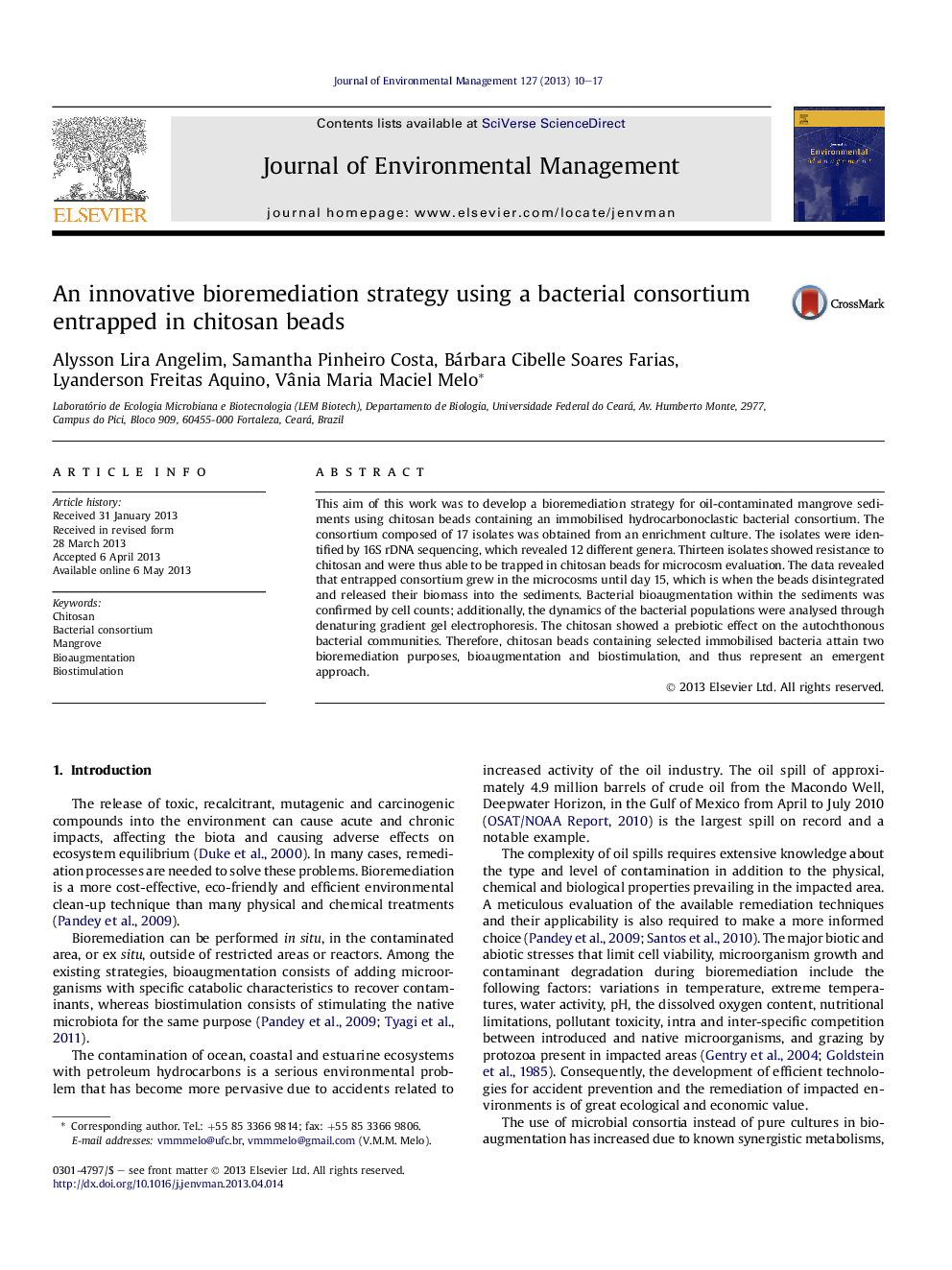| کد مقاله | کد نشریه | سال انتشار | مقاله انگلیسی | نسخه تمام متن |
|---|---|---|---|---|
| 1056001 | 1485285 | 2013 | 8 صفحه PDF | دانلود رایگان |

• An oil-degrading bacterial consortium was successfully entrapped in chitosan beads.
• Chitosan beads were designed to deliver cells and nutrients to sediments.
• Immobilisation favoured cell growth within the beads before in situ release.
• Chitosan served as a source of nutrients to the microbial community in the sediments.
• The product can function in biostimulation and bioaugmentation strategies.
This aim of this work was to develop a bioremediation strategy for oil-contaminated mangrove sediments using chitosan beads containing an immobilised hydrocarbonoclastic bacterial consortium. The consortium composed of 17 isolates was obtained from an enrichment culture. The isolates were identified by 16S rDNA sequencing, which revealed 12 different genera. Thirteen isolates showed resistance to chitosan and were thus able to be trapped in chitosan beads for microcosm evaluation. The data revealed that entrapped consortium grew in the microcosms until day 15, which is when the beads disintegrated and released their biomass into the sediments. Bacterial bioaugmentation within the sediments was confirmed by cell counts; additionally, the dynamics of the bacterial populations were analysed through denaturing gradient gel electrophoresis. The chitosan showed a prebiotic effect on the autochthonous bacterial communities. Therefore, chitosan beads containing selected immobilised bacteria attain two bioremediation purposes, bioaugmentation and biostimulation, and thus represent an emergent approach.
Journal: Journal of Environmental Management - Volume 127, 30 September 2013, Pages 10–17